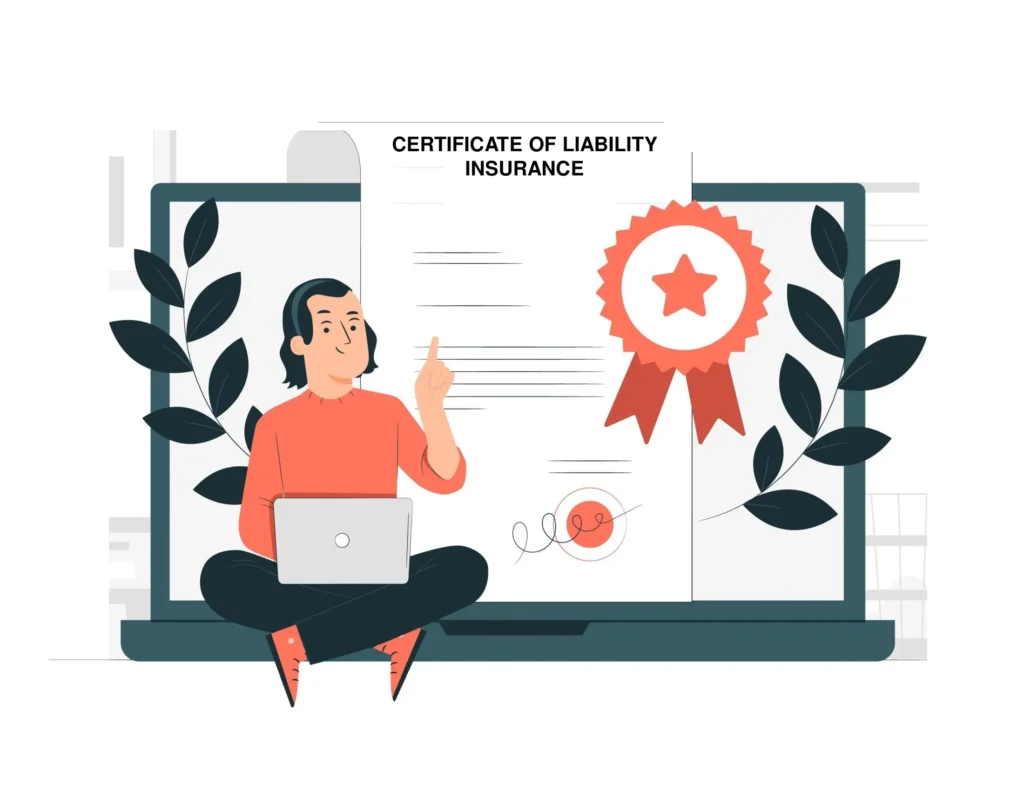Coi insurance
That’s exactly where COI Insurance comes in. It proves that your business holds valid insurance coverage and is financially secure in case of any accidents, property damage, or third-party injuries that may occur while you’re working.
For instance, imagine you’re a contractor and an unexpected mishap causes property damage at a client’s site. With active COI Insurance, your insurance provider covers the cost — not you. This not only protects you from financial loss but also builds trust and reliability with your clients.
One of the biggest advantages of COI Insurance is how it strengthens your professional image. It shows that you take your work seriously and follow proper regulations. In today’s competitive business world, where trust matters more than anything, a valid and updated COI Insurance document can open doors to new opportunities. Whether you’re an independent professional or run a growing business, having this certificate readily available adds both protection and prestige to your name.

Insurance Certificates

Certificate of Auto Insurance

Certificate of Liability Insurance
COI Meaning
When people mention COI, they’re referring to the Certificate of Insurance. It’s a short but powerful document that gives a clear overview of your insurance details — including your policy type, coverage limits, effective dates, and insurance provider.
Clients, landlords, and business partners often request a Insurance Certificate before starting any work or signing an agreement. It gives them peace of mind knowing that the person or company they’re dealing with has proper coverage in case something goes wrong. If an accident or loss occurs during a project, the Insurance Certificate ensures that the responsibility lies with the insurance company — not the client.
The beauty of a Insurance Certificate lies in its simplicity. It’s not the full insurance policy but a snapshot that confirms your coverage is real and active. Every professional should make sure their Insurance Certificate is updated and available whenever needed. A valid Insurance Certificate not only fulfills a legal or contractual requirement but also reinforces your reputation as a trustworthy, responsible professional. In short, it’s a simple document that carries a lot of professional weight.
Certificate of Insurance

A Certificate of Insurance is as essential to a business as a foundation is to a building. It’s proof that you have the right insurance coverage to handle potential risks connected to your operations. The document lists important details such as the insurer’s name, policy number, type of coverage, policy limits, and active dates.
Before starting a project or entering into a partnership, most clients or organizations ask to see a Insurance Certificate. This step ensures that if an accident, property damage, or third-party injury occurs, the costs will be handled under the insurance policy. In this way, the COI Insurance provides both sides — the client and the business — with safety and confidence.
Insurance Certificate Sample
An Insurance Certificate Sample helps you understand what information appears on a real COI.
Although the design can vary from one insurance company to another, most certificates share the same essential structure.
Here’s what you’ll typically find on a Insurance Certificate sample:
| Section | Description |
|---|---|
| Insured Name | The name of the person or business covered by insurance |
| Insurance Company | The company providing the policy |
| Policy Number | The unique number identifying the policy |
| Coverage Type | Type of insurance (General Liability, Auto, Professional, etc.) |
| Effective Date | When the policy begins |
| Expiration Date | When the policy ends |
| Coverage Limits | The maximum amount the insurer will pay |
| Agent Information | Contact details of the insurance agent or broker |
| Certificate Holder | The client or company requesting proof of insurance |
When a client asks for proof, the insurance company issues a certificate directly to them.
This ensures that all details are accurate and up to date — reducing any chance of fake or outdated documents.

